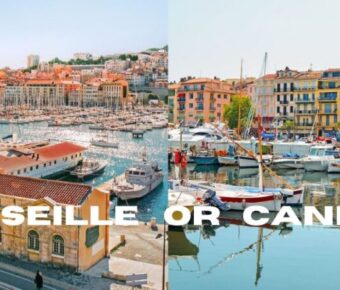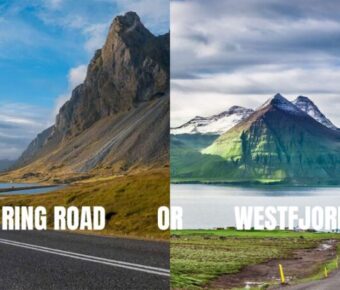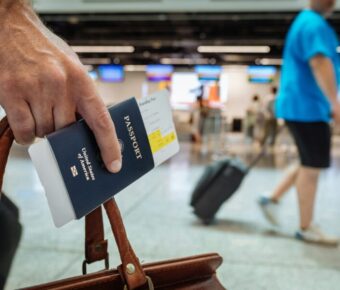
Munich vs Nuremberg: A Local’s Guide to Bavaria’s Most Enchanting Cities
Bavaria offers two incredible cities that draw visitors from around the world: Munich and Nuremberg. Each city has its own distinct character and charm that sets it apart from the other. While Munich shines as Bavaria’s bustling capital with grand attractions that need 2-5 days to explore, Nuremberg packs plenty of medieval charm into a smaller package perfect for 1-3 days.
Both cities serve up amazing German beer, food, and traditions. Munich dazzles with its world-famous Oktoberfest, stunning palaces, and lively beer halls. Nuremberg stands out with its Imperial Castle, old town walls, and rich history as a medieval trading center.
The choice between these Bavarian gems depends on what travelers want to experience. Munich fits those seeking big-city energy and major attractions. Nuremberg works better for travelers who prefer walkable historic towns with fewer crowds. Its central location also makes it an ideal base for day trips to other charming Bavarian towns.
Table of Contents
- Historical Significance
- Munich’s Past
- Nuremberg’s Medieval Heritage
- World War II Remembrance
- Cultural Highlights
- Oktoberfest Celebration
- Munich’s Vibrant Arts Scene
- Nuremberg’s Cultural Events
- Architectural Marvels
- Nuremberg Castle Complex
- Munich’s Marienplatz and Residence
- Museum and Gallery Tours
- Munich’s World-Class Museums
- Nuremberg’s Historical Museums
- Experiences for Budget Travelers
- Affordable Accommodations
- Economical Dining Options
- Free Attractions and Tours
- Local Food and Drink
- Munich’s Beer Halls and Breweries
- Nuremberg’s Culinary Specialties
- Shopping Destinations
- Markets and Boutique Shops in Munich
- Nuremberg’s Artisan Crafts
- Outdoor Activities and Excursions
- Parks and Gardens in Munich
- Day Trips from Nuremberg
- Frequently Asked Questions
- What are the must-visit attractions when comparing Munich and Nuremberg?
- Which city offers a more authentic Christmas market experience, Munich or Nuremberg?
- How do the cultural experiences differ between Munich and Nuremberg?
- Which city is more conducive for a night out, Munich or Nuremberg?
- Can you highlight the key differences in historical significance between Munich and Nuremberg?
- What are the transportation options when traveling between Munich and Nuremberg, and which is the most efficient?
- Book Your Dream Experience
- More Travel Guides
Historical Significance
Munich and Nuremberg hold deep historical importance in German history. Both cities showcase remarkable medieval architecture, royal connections, and powerful reminders of World War II.
Munich’s Past

Munich began as a small monastic settlement in the 8th century. The city grew into Bavaria’s political heart when the Wittelsbach dynasty made it their royal residence in 1255.
The Residenz palace complex stands as a testament to Munich’s royal heritage. This massive structure served as the seat of Bavarian rulers for over 400 years.
During the 1920s, Munich became the birthplace of the Nazi movement. The city saw significant damage in World War II, with about 90% of its historic center destroyed by Allied bombing.
Nuremberg’s Medieval Heritage

The Imperial Castle (Kaiserburg) towers above Nuremberg as a symbol of the city’s medieval power. Built in the 11th century, it served as a key residence for Holy Roman Emperors.
Nuremberg reached its golden age in the 15th and 16th centuries. The city became famous for trade, craftsmanship, and scientific innovations. Notable residents included artist Albrecht Dürer, whose house still stands in the old town.
The city’s well-preserved medieval walls stretch for 4 kilometers around the old town. Many of the original towers and gates remain intact today.
World War II Remembrance

The Nazi Party held massive rallies in Nuremberg during the 1930s. The city’s connection to this dark period led to it being chosen for the famous Nuremberg Trials, where Nazi leaders faced justice after the war.
Munich’s nearby Dachau Concentration Camp stands as one of the most visited Holocaust memorials in Germany. It was the first Nazi concentration camp and operated throughout the war.
Both cities have dedicated museums and memorials that document this difficult period. The Documentation Center in Nuremberg and Munich’s NS-Documentation Center offer detailed insights into the rise and consequences of Nazi rule.
Cultural Highlights
Munich and Nuremberg both offer distinctive cultural experiences that showcase Bavaria’s rich heritage through festivals, arts, and traditions. These cities host world-famous events and maintain thriving cultural scenes year-round.
Oktoberfest Celebration

Oktoberfest in Munich stands as the world’s largest folk festival. The event takes over the Theresienwiese grounds each September and October, welcoming over 6 million visitors annually.
The festival features 14 main beer tents, each with its own unique atmosphere and traditions. Popular tents include the Hofbräu-Festzelt for its lively international crowd and the Schottenhamel where the mayor taps the first keg.
Traditional Bavarian music fills the air while visitors enjoy pretzels, würstl (sausages), and Mass (1-liter) beers served by waitresses in dirndls. Beyond beer, the festival offers family-friendly carnival rides and games.
Munich’s Vibrant Arts Scene

The Kunstareal museum quarter houses three major art galleries – the Alte Pinakothek, Neue Pinakothek, and Pinakothek der Moderne. Each showcases different periods from classical to contemporary art.
The Deutsches Museum stands as the world’s largest science and technology museum. Its hands-on exhibits draw curious minds of all ages.
Live music thrives at venues like the Gasteig cultural center and the Bavarian State Opera. Street performers often gather at Marienplatz, adding spontaneous artistry to daily life.
Nuremberg’s Cultural Events

The Christkindlesmarkt transforms Nuremberg’s main square into a magical Christmas market each December. Red and white striped stalls sell traditional crafts, mulled wine, and the city’s famous lebkuchen (gingerbread).
The Albrecht Dürer House museum celebrates the city’s most famous artist. This preserved medieval building offers insights into 16th-century art and life.
Rock im Park music festival brings modern culture to the Nazi Party Rally Grounds each summer. This event shows how Nuremberg has transformed spaces of dark history into venues for joy and celebration.
Local theaters like the State Theater and the Intimate Theater showcase both German and international productions throughout the year.
Architectural Marvels
Both Munich and Nuremberg showcase stunning examples of medieval and Renaissance architecture that tell the rich history of Bavaria. These cities preserve their most magnificent buildings with great care.
Nuremberg Castle Complex

The Imperial Castle sits majestically on a sandstone ridge above Nuremberg’s old town. Built in the 11th century, this massive fortress served as a key residence for Holy Roman Emperors during the Middle Ages.
The castle features three main sections: the Imperial Castle, the Burgraves’ Castle, and the Imperial City buildings. The Deep Well House contains a 165-foot well that provided water during sieges.
The Double Chapel stands out as an architectural gem with its Romanesque design. Its two identical chapels stack on top of each other – the emperor worshipped in the upper chapel while servants used the lower one.
Visitors can climb the Sinwell Tower for amazing views of Nuremberg’s red-roofed old town. The tower got its name from “sinwel,” meaning “perfectly round” in medieval German.
Munich’s Marienplatz and Residence

The Munich Residence reigns as Germany’s largest city palace. This vast complex grew from a small 14th-century castle into a grand palace with 130 rooms and 10 courtyards.
The Antiquarium amazes guests with its barrel-vaulted ceiling covered in painted scenes. Built in the 1560s, this Renaissance hall ranks as the largest secular Renaissance room north of the Alps.
Marienplatz dazzles with the New Town Hall’s neo-Gothic facade. The building’s Glockenspiel puts on a show three times daily, with 43 bells and 32 life-sized figures acting out historical scenes.
The square gets its name from the Mariensäule column at its center. This golden statue of Mary stands atop a column built in 1638 to celebrate Bavaria’s victory over Swedish forces.
Museum and Gallery Tours
Both cities showcase Bavaria’s rich cultural heritage through distinct museum experiences. Munich features world-renowned art collections, while Nuremberg tells stories through historical artifacts and medieval treasures.
Munich’s World-Class Museums

The Alte Pinakothek stands out with its massive collection of European masterpieces from the 14th to 18th centuries. Art lovers can spend hours studying works by Dürer, Rembrandt, and Rubens.
The Museum Quarter brings together three amazing museums. The Modern Art Museum displays eye-catching pieces from the 20th century. Next door, the Brandhorst Museum shows off bold contemporary art in a striking building.
The Deutsches Museum amazes visitors with its huge science and technology exhibits. Kids love the hands-on displays and full-size machines. The museum’s aircraft collection draws countless aviation fans.
Nuremberg’s Historical Museums

The Germanisches Nationalmuseum holds Germany’s largest collection of cultural history. Its medieval art section displays rare pieces from Nuremberg’s golden age. The museum’s collection of historical musical instruments ranks among Europe’s finest.
The Albrecht Dürer House gives visitors a peek into the famous artist’s life and work. This well-preserved medieval building lets you explore his actual living spaces and studio.
The DB Museum delights train enthusiasts with its collection of historic locomotives and railway artifacts. Interactive exhibits show how trains shaped German history.
The Bavarian Industrial Museum tells fascinating stories about the region’s manufacturing past through hands-on displays and restored machinery.
Experiences for Budget Travelers
Munich and Nuremberg both offer amazing low-cost adventures for savvy travelers. Money-conscious explorers can find plenty to do without breaking the bank.
Affordable Accommodations

Munich’s hostel scene buzzes with energy and social opportunities. The city’s hostels often organize group activities and pub crawls, making it easy to meet fellow travelers. Many hostels are located near public transit stops, saving money on transportation.
Nuremberg’s hostels cost less than Munich’s on average. The city offers cozy guesthouses in the old town area, giving budget travelers a chance to stay in historic buildings. Most budget accommodations include free WiFi and shared kitchen facilities.
Find cheap hotels early to get the best deals in both cities.
Economical Dining Options
Munich’s beer gardens serve large portions of traditional Bavarian food at reasonable prices. Many offer self-service areas where prices drop even lower. Street food markets like Viktualienmarkt provide fresh local snacks and meals.
Nuremberg’s famous bratwurst stands sell authentic local sausages at budget-friendly prices. The city’s Turkish neighborhoods offer tasty döner kebabs and falafel.
Both cities have plenty of bakeries selling pretzels and other filling pastries for quick, cheap meals.
Free Attractions and Tours

Munich’s English Garden offers endless free entertainment. Visitors can watch surfers on the artificial wave or enjoy free concerts at the Chinese Tower beer garden during summer.
Nuremberg’s medieval walls provide a free walking route around the old city. The Documentation Center Nazi Party Rally Grounds offers free admission on the first Sunday each month.
Free walking tours operate in both cities – tips for guides are expected but still cost less than paid tours. The tours cover main attractions and local history.
Local Food and Drink
Food traditions run deep in both cities, with Munich’s famous beer halls serving hearty Bavarian classics while Nuremberg takes pride in its unique bratwurst and gingerbread specialties.
Munich’s Beer Halls and Breweries

The Hofbräuhaus stands as Munich’s most famous beer hall, serving traditional dishes like Schweinshaxe (crispy pork knuckle) alongside fresh-brewed beer in massive steins.
Dozens of beer gardens are scattered across the city, perfect for warm afternoons spent under chestnut trees with a cold Helles lager and fresh Brezel (pretzel).
The Viktualienmarkt food market offers local delicacies like Weißwurst (white sausage) and Leberkäse (meat loaf). Many vendors let guests sample specialties before buying.
Nuremberg’s Culinary Specialties

The city’s signature dish is the Nürnberger Rostbratwurst – small, finger-sized sausages seasoned with marjoram. Locals eat them three at a time in a crusty roll called Drei im Weggla.
Lebkuchen (gingerbread) remains Nuremberg’s most famous sweet treat. These spiced cookies come in decorative tins and make perfect gifts to take home.
The Hauptmarkt square hosts food stalls selling regional favorites like Schäufele (smoked pork shoulder) and fresh-baked Dampfnudel (sweet dumplings).
Local restaurants serve hearty Franconian dishes at prices about 20% lower than similar meals in Munich.
Shopping Destinations
Munich and Nuremberg offer distinct retail experiences that reflect their unique characters and histories. Munich shines with luxury boutiques and modern malls, while Nuremberg excels in traditional crafts and local specialties.
Markets and Boutique Shops in Munich

The Kaufingerstrasse and Neuhauser Strasse form Munich’s main shopping district. These pedestrian-only streets feature both international brands and local shops spread across several blocks.
The Viktualienmarkt stands out as Munich’s premier food market. Its 140+ stalls sell fresh produce, cheeses, and Bavarian specialties. You’ll find vendors offering everything from exotic spices to local honey.
Munich’s Maximilianstrasse caters to luxury shoppers. This elegant boulevard houses designer stores like Louis Vuitton and Gucci in beautiful historic buildings.
Nuremberg’s Artisan Crafts

The Handwerkerhof (Craftsmen’s Courtyard) near the city walls showcases traditional Franconian crafts. Small workshops sell handmade leather goods, glass art, and the famous Nuremberg gingerbread.
The Hauptmarkt square hosts Nuremberg’s oldest market tradition. Local artisans display metalwork, wooden toys, and handmade Christmas decorations throughout the year.
Nuremberg’s Old Town features small specialty shops selling unique souvenirs. The narrow streets around Königstrasse hide family-owned stores specializing in traditional German products and local art pieces.
Outdoor Activities and Excursions
Munich and Nuremberg offer unique outdoor experiences, from sprawling urban parks to scenic day trips that let visitors explore Bavaria’s natural beauty.
Parks and Gardens in Munich

The English Garden stands out as Munich’s crown jewel of outdoor spaces. This massive urban park spans over 900 acres, making it one of Europe’s largest city parks.
Visitors can watch surfers ride the artificial wave at Eisbach or relax at one of several beer gardens scattered throughout the park. The Chinese Tower beer garden seats up to 7,000 people.
The Westpark provides a quieter alternative with its Japanese garden and peaceful lake. During summer months, the park hosts outdoor cinema events and cultural festivals.
Day Trips from Nuremberg

The Fränkische Schweiz (Franconian Switzerland) region near Nuremberg draws rock climbers and hikers with its dramatic limestone cliffs and well-marked trails.
Nature enthusiasts can explore the Reichswald Forest, which circles much of Nuremberg. The forest features cycling paths and walking trails suitable for all skill levels.
A short trip to the Rothsee lake offers swimming, sailing, and windsurfing opportunities during warmer months. The lake’s surrounding paths make perfect spots for walking or biking.
The medieval town of Regensburg sits just 1.5 hours away by train, where visitors can walk along the Danube River or bike through the surrounding countryside.
Frequently Asked Questions
Munich and Nuremberg stand apart with their distinct charm, attractions, and cultural offerings. Both cities give visitors unique chances to dive into Bavarian life, from stunning castles to local beer halls.
What are the must-visit attractions when comparing Munich and Nuremberg?
Munich’s top spots include the famous Marienplatz with its stunning Glockenspiel and the English Garden, one of Europe’s biggest city parks.
The BMW Museum and Nymphenburg Palace show off Munich’s mix of modern and royal history.
Nuremberg’s Imperial Castle sits high above the city and offers amazing views. The Albrecht Dürer House gives visitors a peek into medieval life.
The old town walls of Nuremberg make for great walks and photos. Many find them more complete than other German cities.
Which city offers a more authentic Christmas market experience, Munich or Nuremberg?
Nuremberg’s Christkindlesmarkt ranks as one of Germany’s oldest and most traditional markets. Its strict rules about modern items keep things authentic.
Munich’s markets spread across multiple locations. The main one at Marienplatz mixes traditional crafts with more modern offerings.
Local vendors in Nuremberg still make their famous lebkuchen (gingerbread) using centuries-old recipes.
How do the cultural experiences differ between Munich and Nuremberg?
Munich shines with its beer hall culture. The Hofbräuhaus remains a must-visit spot for traditional music and food.
Nuremberg keeps its medieval character alive through festivals and events throughout the year.
Munich offers more art museums and galleries. The Pinakothek museums house world-class collections.
Which city is more conducive for a night out, Munich or Nuremberg?
Munich offers more variety with its mix of beer gardens, modern clubs, and student hangouts. The Schwabing area stays lively until late.
Nuremberg’s nightlife centers around the old town. Small pubs and wine bars create a cozy atmosphere.
Beer gardens in Munich stay open longer during summer months. Many locals spend entire evenings at these outdoor spots.
Can you highlight the key differences in historical significance between Munich and Nuremberg?
Nuremberg played a crucial role as a medieval trading center and free imperial city. Its architecture reflects this golden age.
Munich grew as Bavaria’s royal capital. The city’s grand buildings show its royal connections.
Both cities faced heavy damage in World War II but rebuilt differently. Nuremberg chose careful reconstruction of its medieval buildings.
What are the transportation options when traveling between Munich and Nuremberg, and which is the most efficient?
High-speed ICE trains connect the cities in about 1 hour and 10 minutes. Trains run every 30-60 minutes throughout the day.
The Bayern Ticket offers good value for groups. It costs 39 euros for two travelers and covers all regional trains.
Driving takes around 2 hours depending on traffic. The autobahn connects the cities directly.



